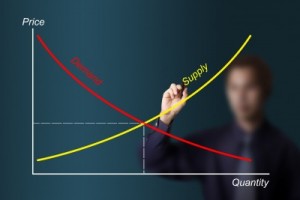The supply curve for personal data

In the TED talk, ‘What physics taught me about marketing’, Dan Cobley, a marketing director at Google, speaks about the Heisenberg Uncertainty principle. In a nutshell, this means that it’s impossible to exactly measure the position and momentum of a particle, because the act of measuring changes them.
Dan’s “marketing takeaway” from this was that we should measure what consumers actually do, rather than what they say they’ll do. Those of you who’ve read our other posts will know why we cringed when he cited “better point-of-sale tracking” as a way things have ‘improved’ in this respect.
But there is a lot of truth in what Dan says, and it applies to an interesting chart in a report by the Boston Consulting Group called ‘The value of our digital identity’.

This is an intriguing stab at the ‘supply curve for personal data’, but you’ll notice it was constructed by asking respondents for their willingness to provide data at different price points.
Coming back to Dan’s takeaway, which to paraphrase was ‘don’t ask consumers what they will do, measure what they actually do’, this really gets to the crux of why the negotiation engine at the heart of Handshake is so much better for brands than the way things work now.
Today, if you ask 1000 people to complete a survey for £20 and 300 say yes and 700 say no, what have you learnt? You’ve identified a point on the supply curve, but you’ve got no idea what the supply curve actually looks like. Is it really steep (aka inelastic) in which case you could have got far more response for a little more outlay? Is it really flat (aka elastic), in which case you could have got slightly less response for a lot less money? Did it change following that news story about the big personal data leak? Did it change because another company in our industry is getting lambasted on Twitter at the moment? Did it change because you asked at 10pm instead of 6pm? Or because you needed the results within 10 minutes instead of a day?
With a ‘take it or leave it’ offer, you miss the opportunity for a ton of insight you get when you negotiate a price with consumers – rich insight you get before a single question in your survey’s been answered. And it’s based on real behaviour, not “what they say”.
There’s a reason why we study supply curves: they are part of the foundation for how our businesses and economies work. It’s absurd that companies have almost no idea what the supply curves for personal data really look like (and how they depend on other factors) when their very survival increasingly depends on personal data and consumers’ willingness to share it with them. Negotiating with Handshake gives you real-time insight into what these personal data supply curves look like.
We’re betting one day CEO’s will be as interested in the fluctuations in the price of personal data as their stock tickers. That’s why supply curves matter.


















